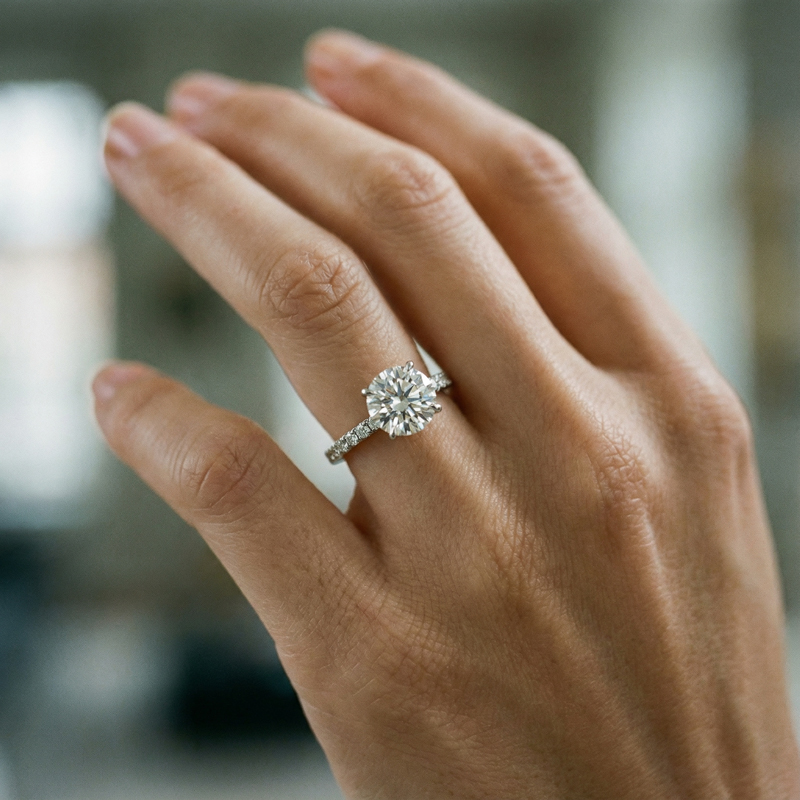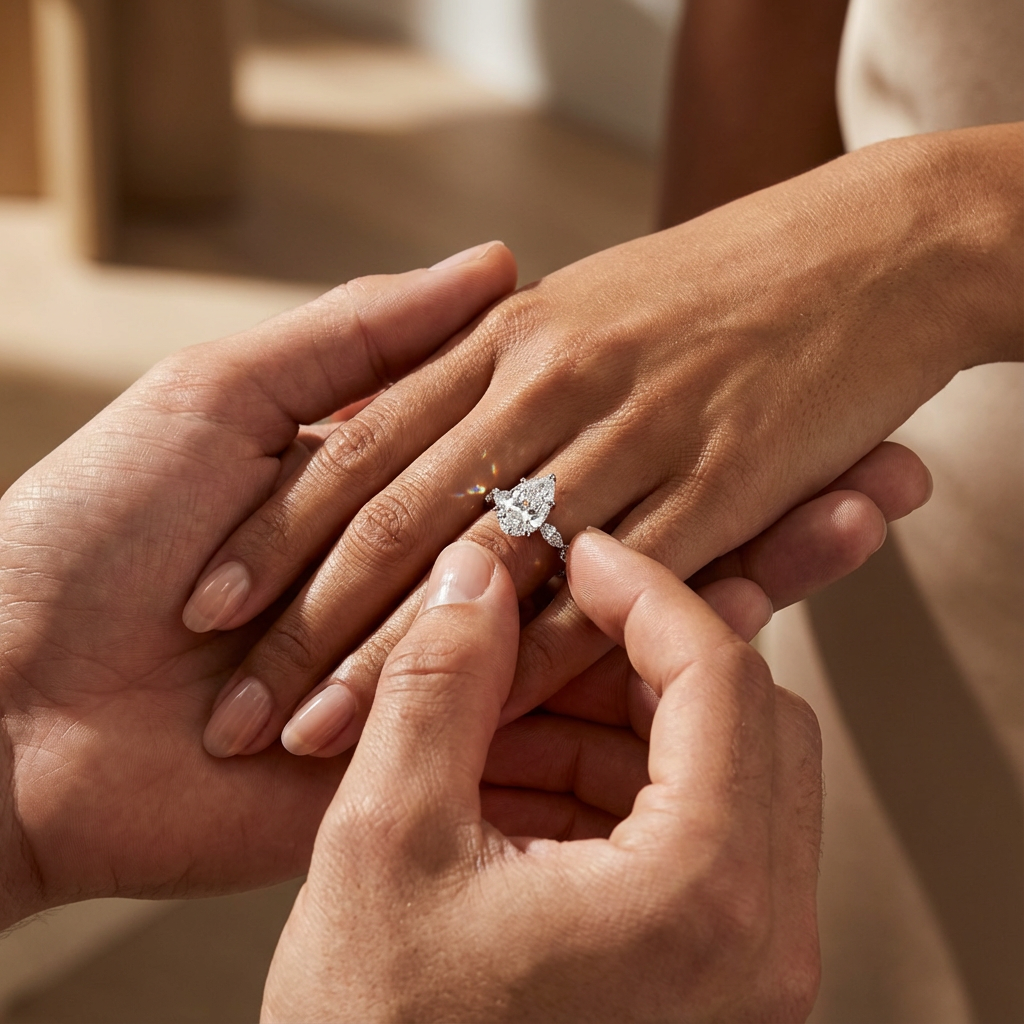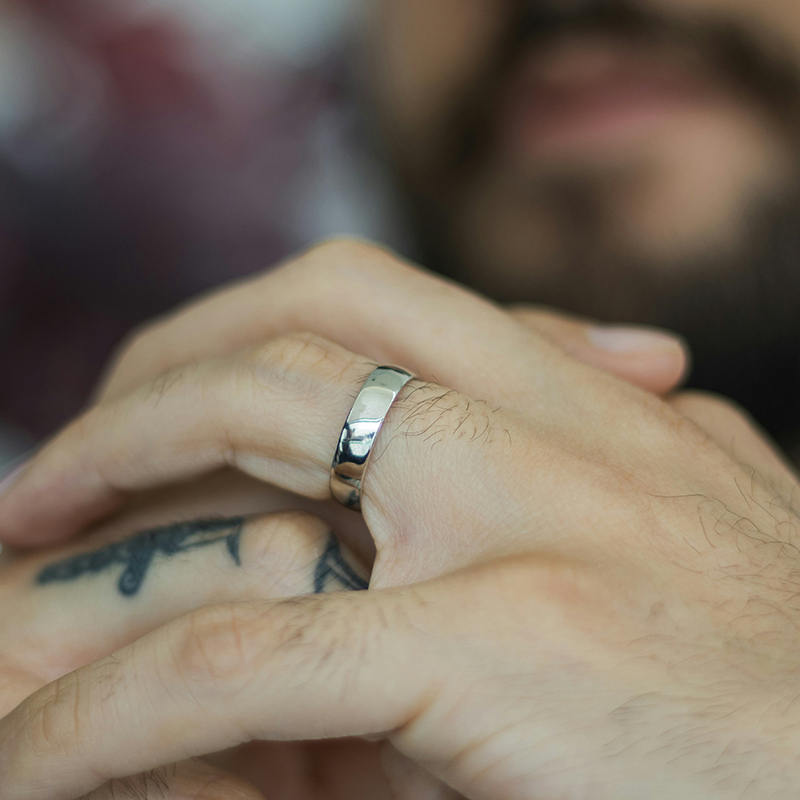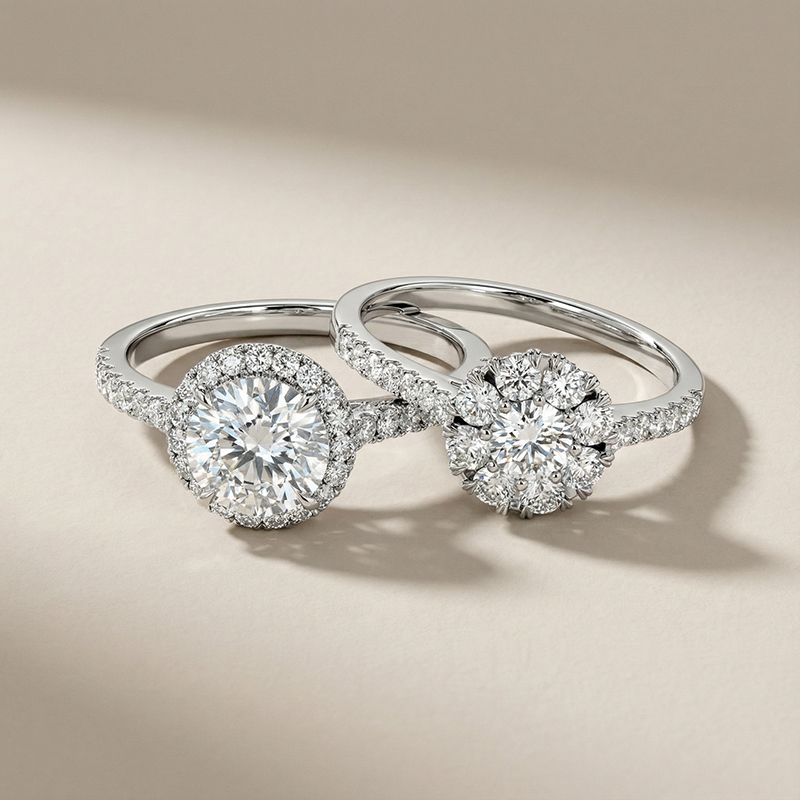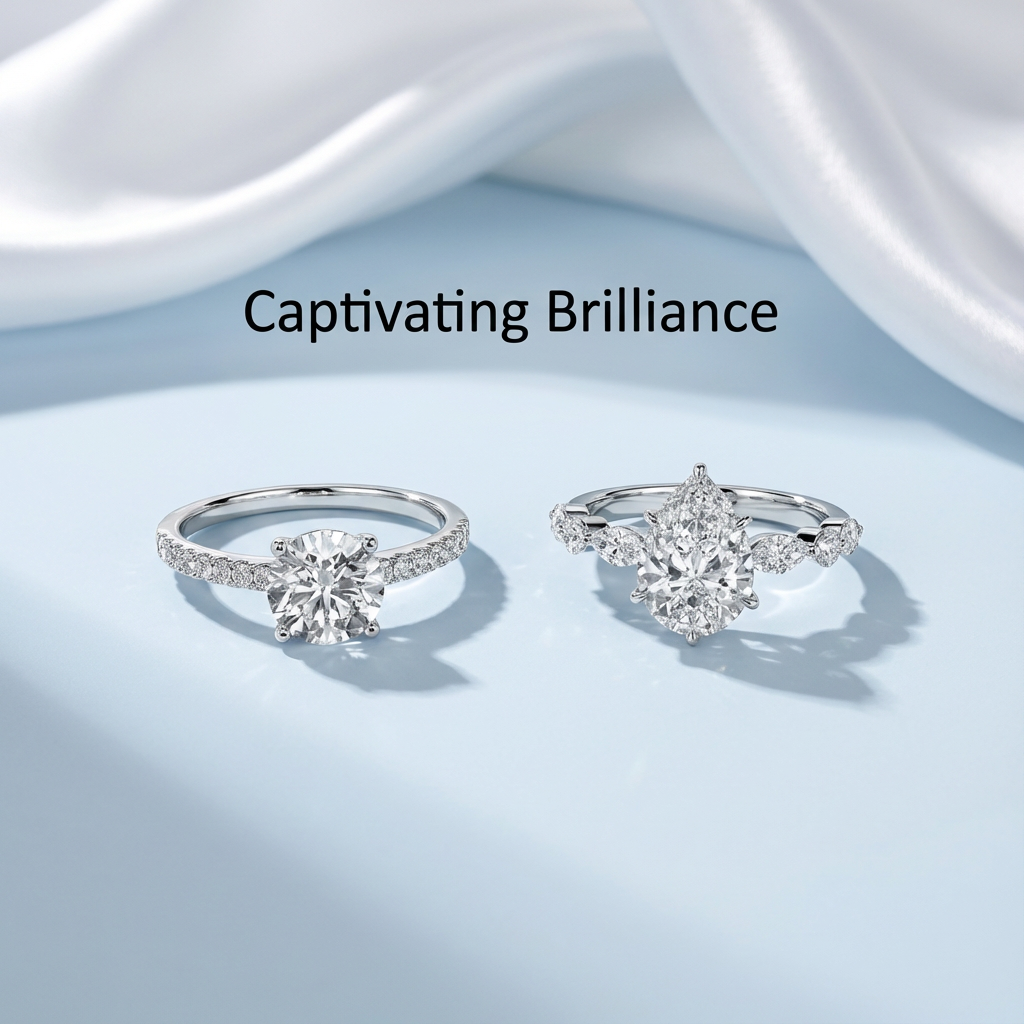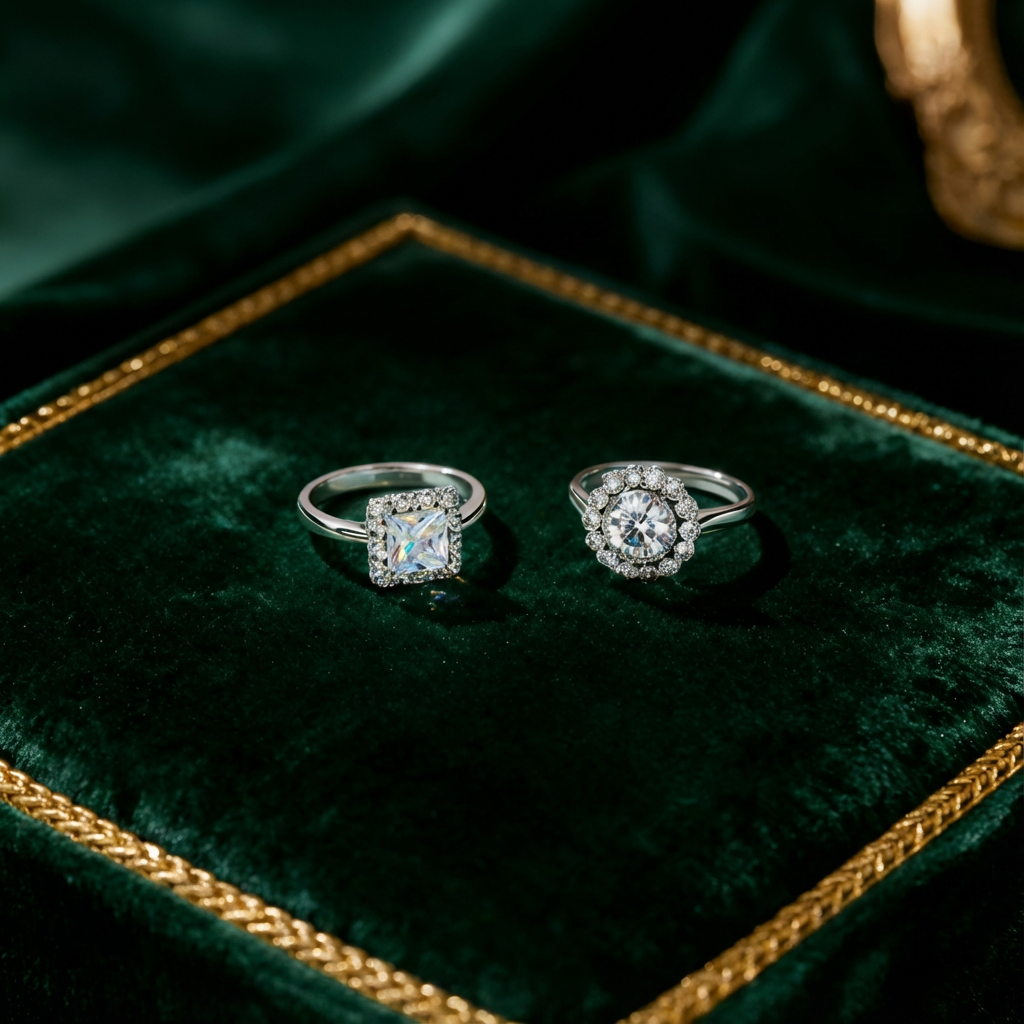"How much should my engagement ring cost?" When this question crosses your mind, congratulations, you are embarking on one of the most exciting journeys of your life: planning a proposal. But why should you set a budget when buying an engagement ring? What factors should you consider? And how can you establish your perfect ring budget? Read on as we guide you through every consideration.
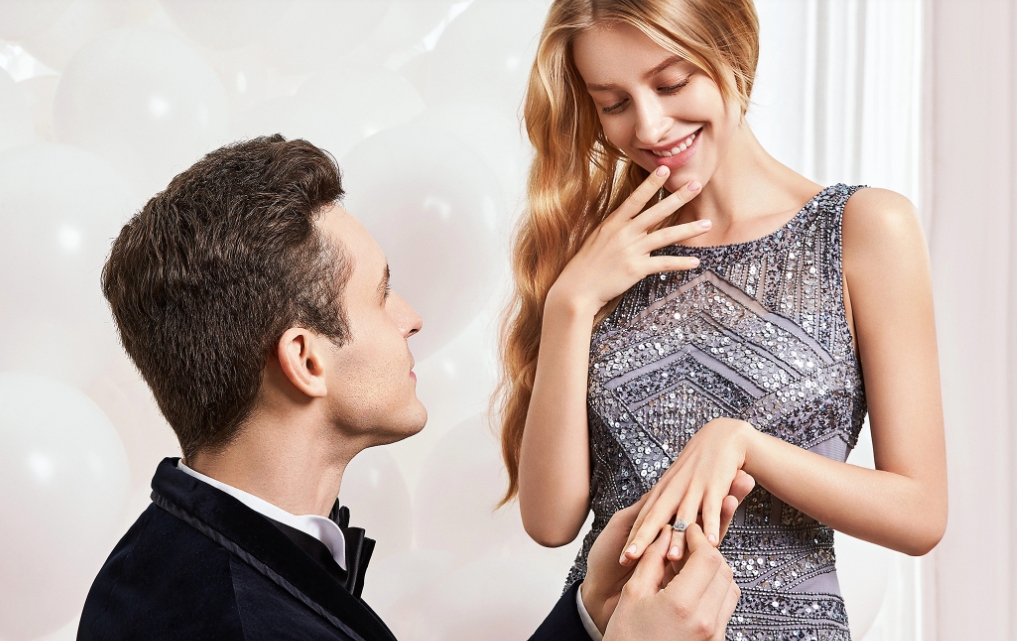
For generations, outdated rules and clever marketing campaigns have tried to dictate this answer. You’ve probably heard the old adage: “two months’ salary,” or even “three months’ salary.” For example, if you earning $5,000 a month, you should spend $10,000 to $15,000 on an engagement ring; But let’s be honest, in today’s diverse world, does that truly make sense for everyone? Absolutely not! The idea that one rigid rule fits all financial situations, life stages, or personal values is simply outdated.
Your engagement ring isn’t just a piece of jewelry; it’s a profound symbol of your commitment, your shared future, and the unique love story you’re building. Its true value isn’t measured in dollars, but in the sentiment it carries. So, forget the old standards—let’s talk about what really counts when picking an engagement ring.
Breaking Up with Tradition: Key considerations for buying an engagement ring
The “two/three months’ salary” rule was largely a marketing ploy from the diamond industry in the mid-20th century. While it successfully encouraged spending, it doesn’t reflect financial reality for many people today. Consider this:
Financial Diversity: Everyone’s financial situation is different. Some are just starting out or saving for a down payment on a home. Others might be more established.
Personal Priorities: Your priorities might be travel, starting a family, or investing. An expensive ring might derail other significant life goals.
The Meaning of Value: For you and your partner, value might mean quality, ethical sourcing, or a unique design, rather than just carat weight.
Ultimately, the best approach is one that aligns with your specific circumstances and what feels right for you as a couple.
Factors That Influence Engagement Ring Cost
Beyond the arbitrary salary rule, several tangible factors truly influence the price of an engagement ring. Understanding these will empower you to make an informed decision:
The 4 Cs of Diamonds: These are the universal standard for grading diamonds and significantly impact price.
- Carat (Weight): This refers to the diamond’s weight, not its size, although heavier diamonds are typically larger. It’s often the biggest price driver.
- Cut: Widely considered the most important C, as it determines the diamond’s sparkle and brilliance. A well-cut diamond reflects light beautifully, regardless of its size.
- Color: Diamonds are graded on a scale from D (colorless) to Z (light yellow/brown). Colorless diamonds are rarer and more expensive.
- Clarity: This measures the presence of inclusions (internal flaws) and blemishes (external flaws). Fewer and less visible flaws mean higher clarity and cost.

Metal Type: The material of the band plays a role.
- Gold: Available in various karats (10k, 14k, 18k) and colors (yellow, white, rose). 18k is purer but softer than 14k.
- Platinum: A naturally white and highly durable metal, typically more expensive due to its density and rarity.
Key Differences:
Price: Platinum > Palladium > 18k Gold > 14k Gold > 10k Gold
Durability: 10k Gold > 14k Gold > Palladium > Platinum > 18k Gold
oColor Options: Gold offers most variety (yellow/white/rose)
oHypoallergenic: Platinum is safest for sensitive skin.
Setting Style: The design of the ring impacts material and craftsmanship costs
- Solitaire: A single diamond on a plain band, often the most cost-effective.
- Halo: A circle of smaller diamonds surrounding the center stone, enhancing its apparent size and sparkle.
- Three-Stone: Represents past, present, and future.
- Pave: Tiny diamonds set closely together along the band, creating a shimmering effect.
Lab-Grown vs. Natural Diamonds: Lab-grown diamonds are chemically, physically, and optically identical to natural diamonds but are created in a controlled environment. They are typically 20-40% less expensive than natural diamonds of comparable quality, offering an excellent value option.
Alternative Gemstones: Don’t feel limited to diamonds! Sapphires, emeralds, moissanite, and morganite are beautiful, durable, and often more budget-friendly options that can make your ring truly unique.
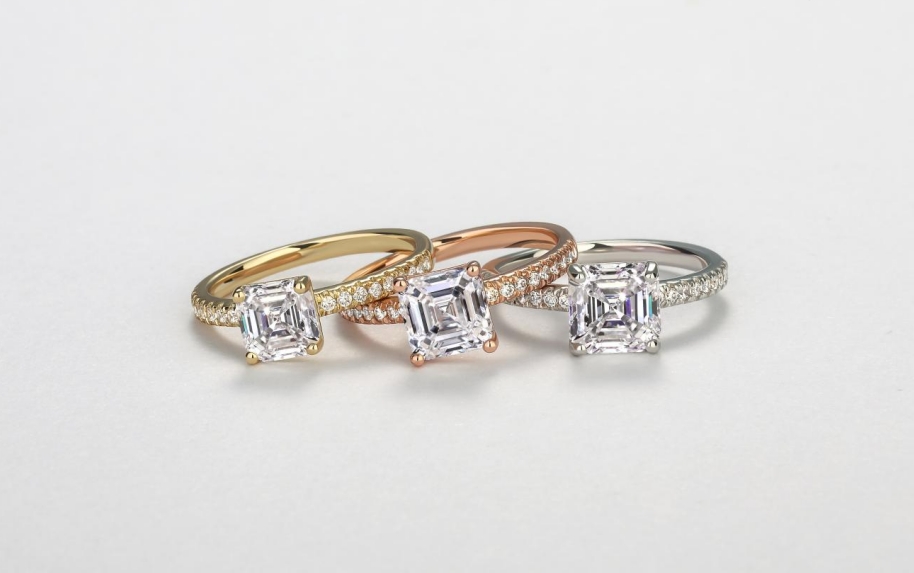
How to Determine YOUR Engagement Ring Budget
Instead of focusing on arbitrary rules, focus on what’s financially comfortable and personally meaningful for you. Here’s a more practical approach to setting your budget:
1.Open Communication is Key: The very first step should be an honest conversation with your partner about finances in general, and then about the ring. This isn’t about spoiling the surprise (you can still do that!), but about understanding shared financial goals and comfort levels.
2.Assess Your Current Financial Situation:
- What are your monthly income and expenses?
- Do you have significant debt (credit cards)?
- Are you saving for other big life events (house down payment, wedding)?
- How much can you comfortably save or spend without causing financial strain?
3.Prioritize What Matters Most:
- Is a larger stone crucial, or is cut quality and sparkle more important?
- Do you prefer a classic design or something unique?
- Is ethical sourcing a top priority?
- Are you open to lab-grown diamonds or alternative gemstones?
4.Consider the Long Term: Remember, the ring is just one part of your journey. You’ll likely have a wedding to plan, potentially a home to buy, and a future to build. Don’t overspend on the ring at the expense of these other important milestones.
5.Explore Options: Once you have a general budget, start researching. Online tools, jewelers, and even custom design options can help you see what’s possible within your price range.
The “Right” Answer is Personal
Here’s the beautiful truth: there is no universal “right” amount to spend on an engagement ring. The only “right” amount is what you can comfortably afford and what feels meaningful to both you and your partner.
As the renowned British author and poet, Oscar Wilde, once said:
“The one charm of marriage is that it makes a life of deception absolutely necessary for both parties.”
Okay, perhaps not that quote for an article on engagement rings! Let’s choose something more fitting, reflecting the sentiment of commitment and personal value over material cost:
“An engagement ring is a beautiful symbol of a shared future, not a price tag. Its true value lies in the love and commitment it represents.”
It’s not about impressing others or adhering to outdated notions. It’s about a declaration of love tailored to your unique circumstances. Whether you spend a few hundred or several thousand, what truly matters is the thought, the intention, and the promise behind it.
Focus on finding a ring that you cherish, that symbolizes your devotion, and that you’re proud to give. The most precious part of your engagement won’t be the sparkle of the stone, but the enduring shine of your love. Happy planning! If you want to explore further? Drop us a message!”

